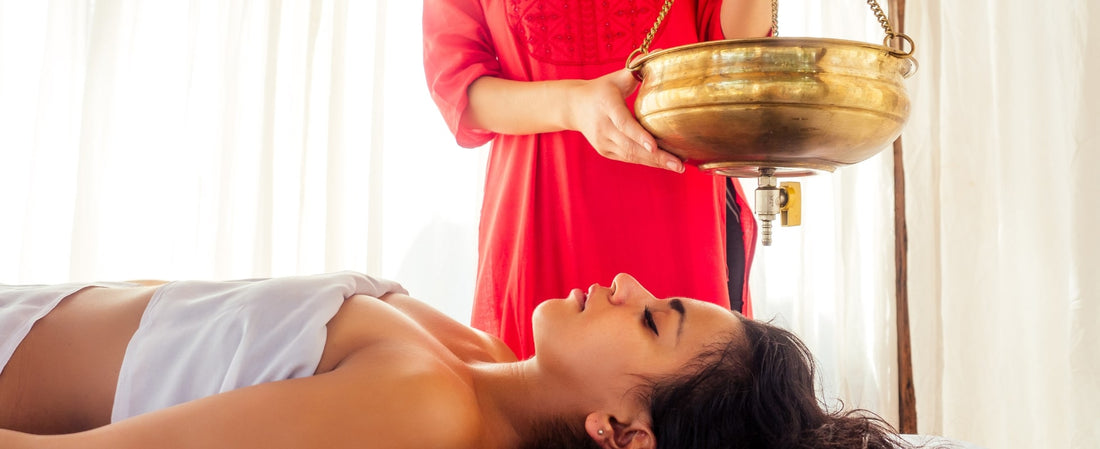
What is Panchakarma?
The word panchakarma is composed of two words, "pancha’ and ‘karma’, where pancha means ‘five’ and karma means ‘action’. Panchakarma is an ancient therapeutic regimen in Ayurveda, which is the traditional system of medicine from India. It is a set of five cleansing and rejuvenating treatments designed to detoxify the body, restore balance, and enhance overall well-being. These specific procedures are used to remove accumulated toxins, which are known as ama doshas, from the body to purify the tissues and revitalize the body's systems.
The following principles are applied in panchakarma procedures:

- The procedure corrects imbalances in body physiology by normalizing aggravated doshas (Vata, Pita, and Kapha).
- It is performed when tridoshas are excessively aggravated (bahu dosha) and are ready to be expelled naturally through the nearest srotas.
- If doshas are dormant (leena dosha), the procedure is done after moving them from the periphery (shakha) to the koshtha (digestive tract).
- Factors that help doshas move from the periphery to the koshtha include:
-
-
Use of specific Ayurvedic remedies (rasyan)
-
Application of Ayurvedic techniques (Ayurvedic sparsha).
-
Key Stages in Ayurvedic Dosha Management
Aggravation of dosha (vriddhi)
Liquefaction of dosha (vishyandana)
Suppuration of dosha (paka)
Clearing the body channels (srotoshodhana)
Pacification of vata (vayunigraha)
The five primary components of Panchakarma are:
- Vamana (Therapeutic Vomiting): In this vomiting, it is induced to expel excess mucus or toxins from the upper respiratory and digestive systems, particularly for conditions related to excess Kapha dosha (mucous, heaviness, congestion).
- Virechana (Purgation): It is a controlled process of cleansing the intestines using herbal laxatives to remove excess Pitta dosha (heat, bile, inflammation) and toxins from the body.
- Basti (Enema): Medicinal enemas, or bastis, are designed to clear the colon and help to balance Vata dosha (air, movement, dryness). This procedure can involve massage with herbal oils or decoctions and is considered one of the most important and effective treatments in Panchakarma.
- Nasya (Nasal Therapy): The administration of herbal medicinal oils or powders through the nostrils to cleanse the sinuses, improve mental clarity, and remove blockages in the respiratory passages.
- Raktamokshana (Bloodletting): This is one of the best therapeutic methods to purify the blood, often used for conditions related to excess heat or toxins in the bloodstream. This is less commonly practiced today due to modern medical alternatives.
Before beginning Panchakarma, preparatory steps like Snehana (oil massage) and Swedana (sudation or sweating therapy) are usually carried out to soften and loosen toxins from the body and make them easier to remove during the five main therapies.
Why should one undergo Panchakarma therapy?
Anxiety and stress can have negative effects on the body and mind. Panchakarma therapy helps to overcome stress and anxiety by detoxifying the body, removing built-up toxins, and balancing the natural energies (doshas). It improves mental clarity, reduces stress, and boosts energy levels. In addition to reducing anxiety, this holistic therapy promotes improved physical health, leaving you feeling calm, restful, and more in balance mentally and physically.
Benefits of Panchakarma
- Completely purifies the body
- Removal of toxins
- Speeding up the metabolism
- Reducing weight
- Enhancing the strength of digestive fire
- Opening up of blocked channels
- Relaxing the mind and body
- Boosts Immunity
- Reduces stress
FAQ’s
1. What is Panchakarma in Ayurveda?
According to Ayurveda, panchakarma is a therapeutic detoxification procedure that consists of five essential treatments meant to balance the doshas, cleanse the body, and enhance general health and well-being.
2. What are the five treatments in Panchakarma?
The five treatments in Panchakarma are:
- Vamana—therapeutic vomiting to cleanse the upper body.
- Virechana—purgation to eliminate toxins from the digestive system.
- Basti—enema therapy to cleanse the colon and balance Vata dosha.
- Nasya – nasal administration of herbs to cleanse the head and sinuses.
- Raktamokshana – bloodletting to remove impurities from the bloodstream.
3. Who can undergo Panchakarma therapy?
Panchakarma therapy can be undergone by individuals seeking detoxification and rejuvenation, typically under the guidance of a qualified Ayurvedic practitioner.
4. What are the benefits of Panchakarma?
Panchakarma offers benefits such as detoxification, improved immunity, enhanced vitality, and balancing of the body's doshas.
5. Are there any side effects of Panchakarma?
While Panchakarma is generally safe, it may cause temporary side effects like fatigue, mild discomfort, or skin irritation, especially during detoxification.

Reviewed By
Dr. Sapna Kangotra
Senior Ayurveda Doctor



